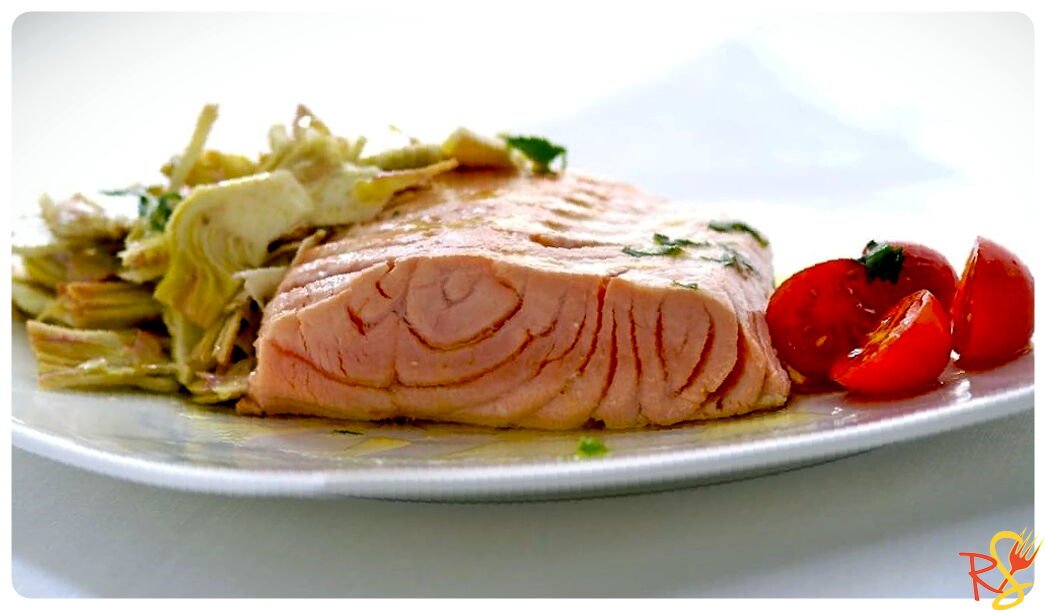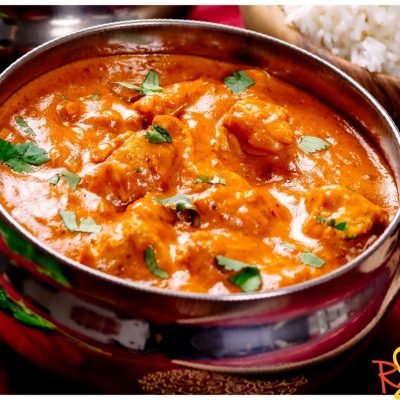Ingredients
-
800 g Salmon Slices4 pieces
-
100 ml Extra Virgin Olive Oil
-
1 Lemon Juice
-
1 tuft Parsley
-
1/2 clove Garlic
-
to taste Salt
-
to taste Black Pepper
-
For Artichoke
-
4 Artichokes
-
1 Lemon Juice
-
150 ml Vegetable Broth
-
1 clove Garlic
-
1 pinch Salt
-
to taste Extra Virgin Olive Oil
Directions
A recipe for all fish lovers cooked in a simple way to preserve all the authentic and genuine taste.
The Lemon Artichokes Baked Salmon is in fact a rich and inviting second dish with slices of Norwegian salmon cooked in the oven with an emulsion of oil, lemon and parsley and served on a bed of sautéed artichokes.
You’ll Impress your friends with a second course of fish with a refined taste and you can change the side dish to match according to your tastes and preferences!
Steps
|
1
Done
|
To prepare the Lemon Artichokes Baked Salmon, start with artichokes that will accompany the salmon (if you prefer you can also clean the artichokes with gloves so as not to stain your fingers). In a large bowl pour cold water and squeeze the juice of a lemon; the water will not make the artichokes black as you cut them. Then remove all the stalk of artichokes with a knife, then remove the outer leaves with your hands until you reach the tender and white ones. Once the outer leaves have been removed, cut the tips of the artichoke then divide it in half. Then with a small knife remove the inner beard of the artichoke. Cut the artichokes into thin slices, then pour them hand to hand into the bowl with water and lemon. When you have finished the artichokes, drain them. |
|
2
Done
10
|
Then in a large pan pour a little oil and the peeled garlic clove. Then pour the drained artichokes, stir and add a pinch of salt. |
|
3
Done
|
While the artichokes are cooking, chop the parsley. Then squeeze the juice of a lemon. |
|
4
Done
10
|
So take the fresh Norwegian salmon, remove the most noticeable thorns with the help of a tweezers then place them on a baking tray lined with baking paper and brush each slice with the emulsion of oil and lemon. You can also leave a little emulsion aside to add it at the end of cooking. |

 English
English Afrikaans
Afrikaans Shqip
Shqip አማርኛ
አማርኛ العربية
العربية Հայերեն
Հայերեն azərbaycan dili
azərbaycan dili Euskara
Euskara башҡорт теле
башҡорт теле Беларуская
Беларуская বাংলা
বাংলা bosanski jezik
bosanski jezik Български
Български မြန်မာစာ
မြန်မာစာ Català
Català 粤语
粤语 Binisaya
Binisaya Chinyanja
Chinyanja 中文(简体)
中文(简体) 中文(漢字)
中文(漢字) Corsu
Corsu Hrvatski
Hrvatski Čeština
Čeština Dansk
Dansk Nederlands
Nederlands Esperanto
Esperanto Eesti keel
Eesti keel vosa Vakaviti
vosa Vakaviti Suomi
Suomi Galego
Galego ქართული
ქართული Deutsch
Deutsch Ελληνικά
Ελληνικά ગુજરાતી
ગુજરાતી Kreyòl ayisyen
Kreyòl ayisyen Harshen Hausa
Harshen Hausa ʻŌlelo Hawaiʻi
ʻŌlelo Hawaiʻi Hmoob
Hmoob עברית
עברית Мары йӹлмӹ
Мары йӹлмӹ Magyar
Magyar Íslenska
Íslenska Bahasa Indonesia
Bahasa Indonesia Gaeilge
Gaeilge Italiano
Italiano 日本語
日本語 Қазақ тілі
Қазақ тілі ភាសាខ្មែរ
ភាសាខ្មែរ кыргыз тили
кыргыз тили 한국어
한국어 Kurdî
Kurdî Latīna
Latīna Latviešu valoda
Latviešu valoda Lietuvių kalba
Lietuvių kalba Lëtzebuergesch
Lëtzebuergesch македонски јазик
македонски јазик Malagasy fiteny
Malagasy fiteny Bahasa Melayu
Bahasa Melayu Malti
Malti Te Reo Māori
Te Reo Māori Монгол
Монгол नेपाली
नेपाली Norsk
Norsk Querétaro Otomi
Querétaro Otomi Papiamentu
Papiamentu پارسی
پارسی Polski
Polski Português
Português ਪੰਜਾਬੀ
ਪੰਜਾਬੀ Română
Română gagana fa'a Samoa
gagana fa'a Samoa Gàidhlig
Gàidhlig Cрпски језик
Cрпски језик Sesotho
Sesotho chiShona
chiShona සිංහල
සිංහල Slovenčina
Slovenčina Slovenščina
Slovenščina Af-Soomaali
Af-Soomaali Español
Español Kiswahili
Kiswahili Svenska
Svenska Reo Mā`ohi'
Reo Mā`ohi' Тоҷикӣ
Тоҷикӣ татарча
татарча ภาษาไทย
ภาษาไทย faka Tonga
faka Tonga Українська
Українська Oʻzbek tili
Oʻzbek tili Tiếng Việt
Tiếng Việt Cymraeg
Cymraeg ייִדיש
ייִדיש









